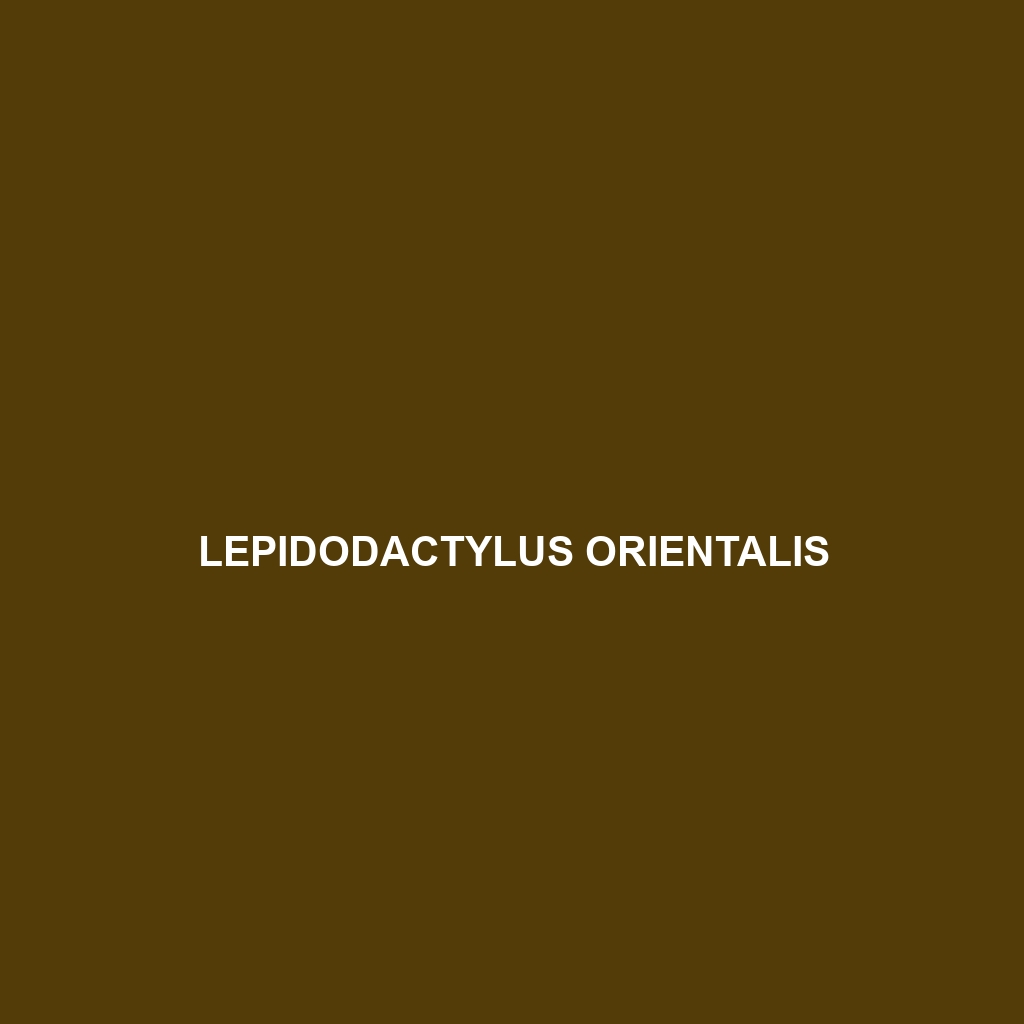Common Name
Lepidodactylus orientalis
Scientific Name
Lepidodactylus orientalis
Habitat
Lepidodactylus orientalis, commonly known as the eastern slender gecko, is predominantly found in the tropical and subtropical regions of Southeast Asia and parts of the Pacific Islands. This species thrives in various habitats, including tropical rainforests, coastal mangroves, and even urban areas where there is ample vegetation. The gecko demonstrates a particular preference for humid environments, favoring areas with high moisture and abundant cover provided by foliage. These habitats not only provide shelter but also a rich source of food, making them ideal for the survival of Lepidodactylus orientalis.
Physical Characteristics
The eastern slender gecko is characterized by its long, slender body, which can reach a length of approximately 10 to 20 centimeters (4 to 8 inches). The coloration is typically a mix of light brown or gray with dark mottling, which helps it blend into its rainforest environment. Its flattened limbs and elongated tail are adaptations that aid in climbing and maneuvering among branches and leaves. The skin is smooth and often features small granular scales, adding to its camouflage properties. These unique physical attributes make Lepidodactylus orientalis easily distinguishable from other gecko species.
Behavior
Lepidodactylus orientalis displays primarily nocturnal behavior, becoming active during the night when it hunts for food and mates. This gecko is social in nature, often found in small groups, particularly during the mating season. Courtship displays may include intricate movements and vocalizations to attract potential mates. Additionally, the gecko is known for its agile movements and ability to leap considerable distances to escape predators, demonstrating a fascinating adaptation to avoid danger. These behaviors make Lepidodactylus orientalis an interesting species to observe in its natural habitat.
Diet
The diet of Lepidodactylus orientalis primarily consists of insects, making it an insectivore. This gecko feeds on various small arthropods, including crickets, ants, and moths, which are abundant in its rainforest and savanna habitat. The gecko’s excellent vision at night aids in spotting prey in low-light conditions. It may also consume nectar and small fruits, showcasing some omnivorous tendencies; however, insects remain the cornerstone of its diet. Understanding the dietary habits of Lepidodactylus orientalis provides insights into its ecological role and interactions within its environment.
Reproduction
The reproductive cycle of Lepidodactylus orientalis typically occurs during the warm, wet months, indicating a strong reliance on environmental conditions for successful breeding. Mating rituals involve elaborate displays and can lead to the production of multiple clutches of eggs throughout the season. The gestation period lasts roughly 6 to 8 weeks, culminating in 1 to 3 eggs per clutch, which are laid in hidden locations to protect them from predators. Notably, the offspring hatch at about 2-3 cm in length, resembling miniature adults, and are independent from birth. The reproductive strategies of Lepidodactylus orientalis ensure the continuation of the species in fluctuating habitats.
Conservation Status
As of now, Lepidodactylus orientalis is considered to be of “Least Concern” according to the International Union for Conservation of Nature (IUCN). However, habitat loss due to deforestation, urbanization, and climate change poses a significant threat to its population. Conservation efforts are being promoted to protect critical habitats and ensure sustainable interactions between human expansion and natural ecosystems. Ongoing research aims to monitor population dynamics and implement strategies to mitigate the impacts of habitat degradation, ensuring the long-term survival of this fascinating species.
Interesting Facts
One interesting fact about Lepidodactylus orientalis is its remarkable ability to camouflage, which not only serves as a defense mechanism but also aids in its nocturnal hunts. The gecko can flatten its body against surfaces, effectively blending in with the environment. Additionally, Lepidodactylus orientalis possesses a unique adaptability to urban settings, allowing it to thrive in gardens and backyards, which expands its range further than many of its forest-dwelling relatives. This adaptability may increase its chances for survival, even as natural habitats diminish.
Role in Ecosystem
Lepidodactylus orientalis plays a crucial role in its ecosystem as a predator of insects, helping to control pest populations. By feeding on various invertebrates, this gecko contributes to the ecological balance within its habitat. Additionally, the gecko serves as prey for larger predators, including birds and snakes, thus forming an integral part of the food web. Its activity as both predator and prey underscores its importance in maintaining the health and functionality of the rainforest and savanna ecosystems where it resides.
